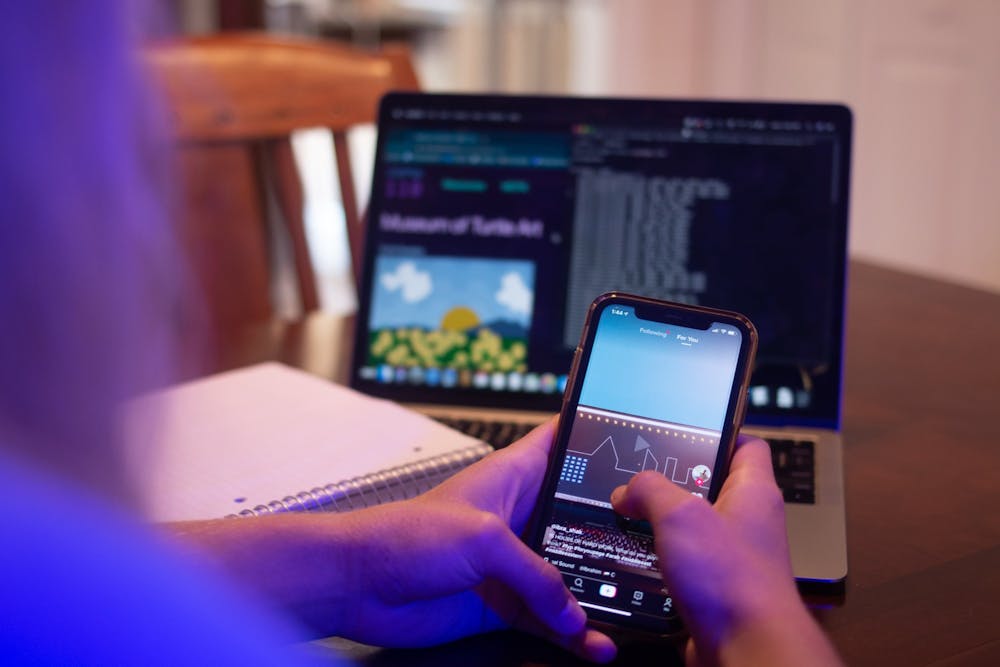“I was so happy in the video, and that resonates with a lot of people,” Shakhtour said. “People could connect to the fact that after they finish something so difficult, that's how happy they are, especially people who have programmed.”
The completed project Shakhtour had filmed was for the class’s Turtle Scene, a project where students can make a design by controlling a digital turtle by giving it instructions for its movement. The turtle drags a marker as it moves and is able to jump around the canvas, filling in the shapes.
The course is trying out the Python programming language for the first time, which teaching assistant professor Kris Jordan said is well suited for data science problems. The program includes the turtle feature which students have used to create artwork.
“One of the early projects we have this semester was a turtle graphics project,” Jordan said. “Students were to design and come up with a theme on their own of their own design for just producing some interesting work of art that has some requirements for how they structured their program.”
Ezri White, an undergraduate teacher assistant for the course, said that over the summer she started tutoring children with this program, specifically the feature of Python with the turtle program. Over the summer, White said they decided to have students do the turtle project.
“(Turtle is) so visual, it's really easy to put two and two together between the code that you're writing and then what's actually happening on the screen,” White said. “I think it's an exciting project for more visual learners as well.”
Jordan said that the tradition of programming with turtle graphics in introductory courses has a rich history over the past 50 years. He described the project as a way of looking at the process of writing programs that are structured and have repeating elements.
“Our idea with projects has been to leave them pretty open-ended,” White said. “So that students can really like get the most out of it and truly express some creativity. I don't know if we were quite expecting the number of students that really put their full effort to this project this semester.”
White said that they invited students to say whether or not they wanted to submit their projects to be displayed somewhere, and soon received an overwhelming 115 students who wanted their designs to be shown.
The course now has a Museum of Turtle Art page on the course website, displaying the projects students have submitted to be displayed.
“The joy is palpable,” Jordan said. “I think for anyone who spends time programming, they are very quickly and easily able to relate to that sort of euphoric feeling of seeing your program actually work and doing what you wanted to do.”
arts@dailytarheel.com
To get the day's news and headlines in your inbox each morning, sign up for our email newsletters.



